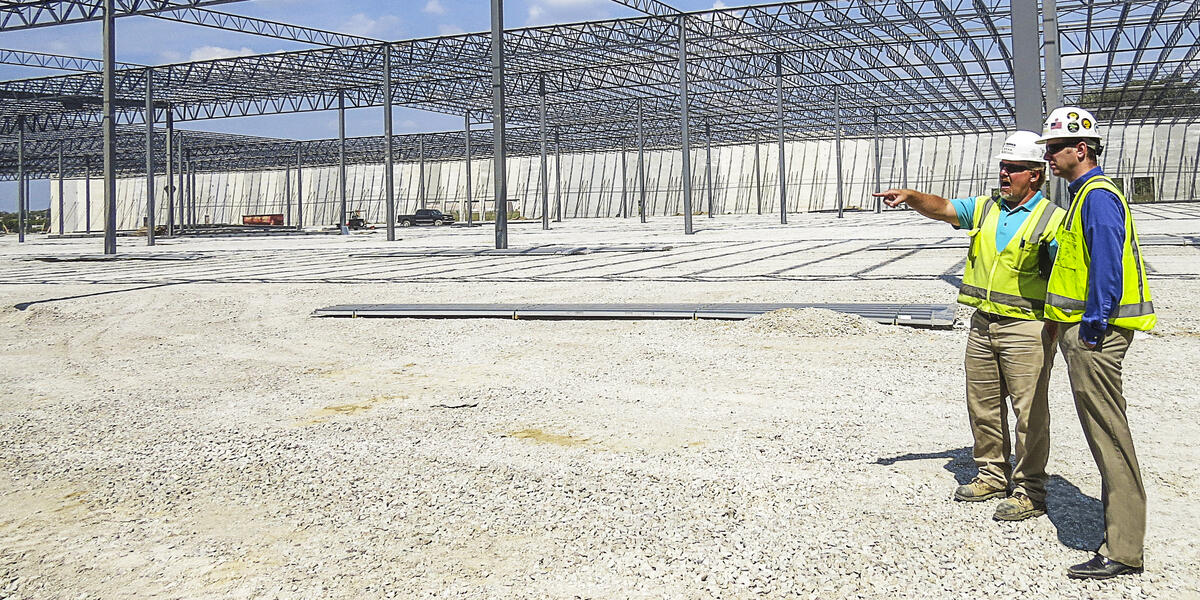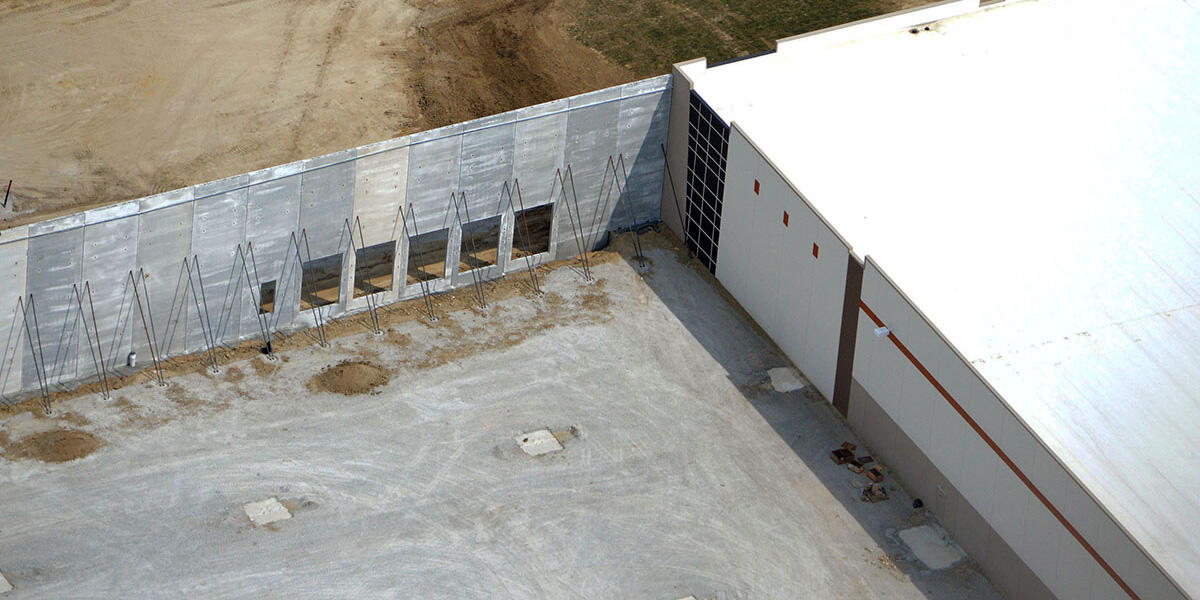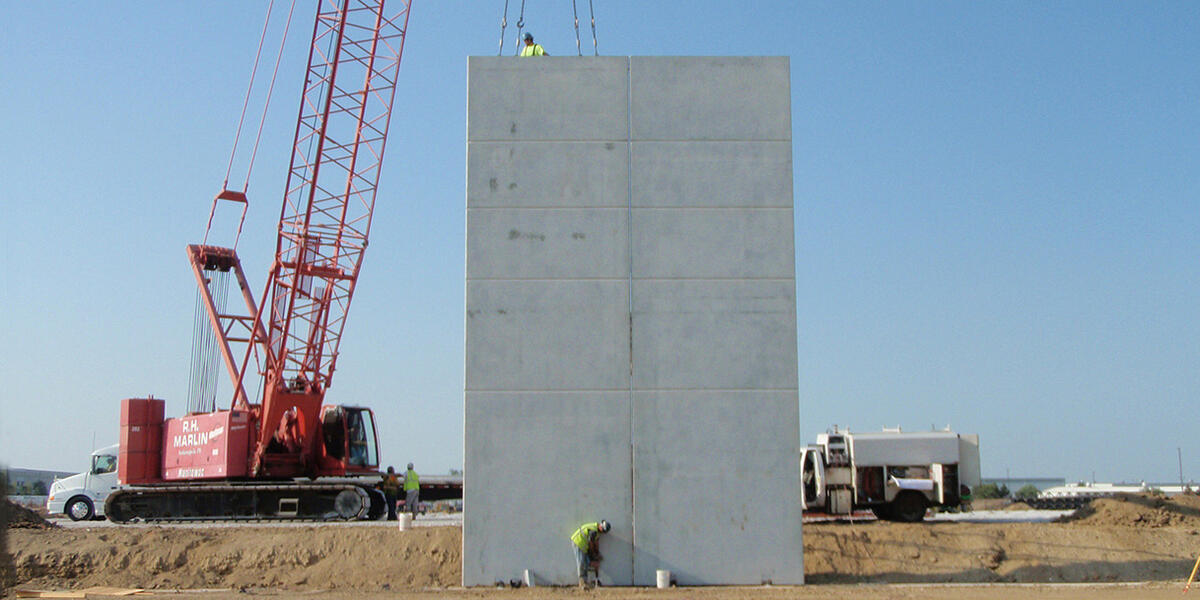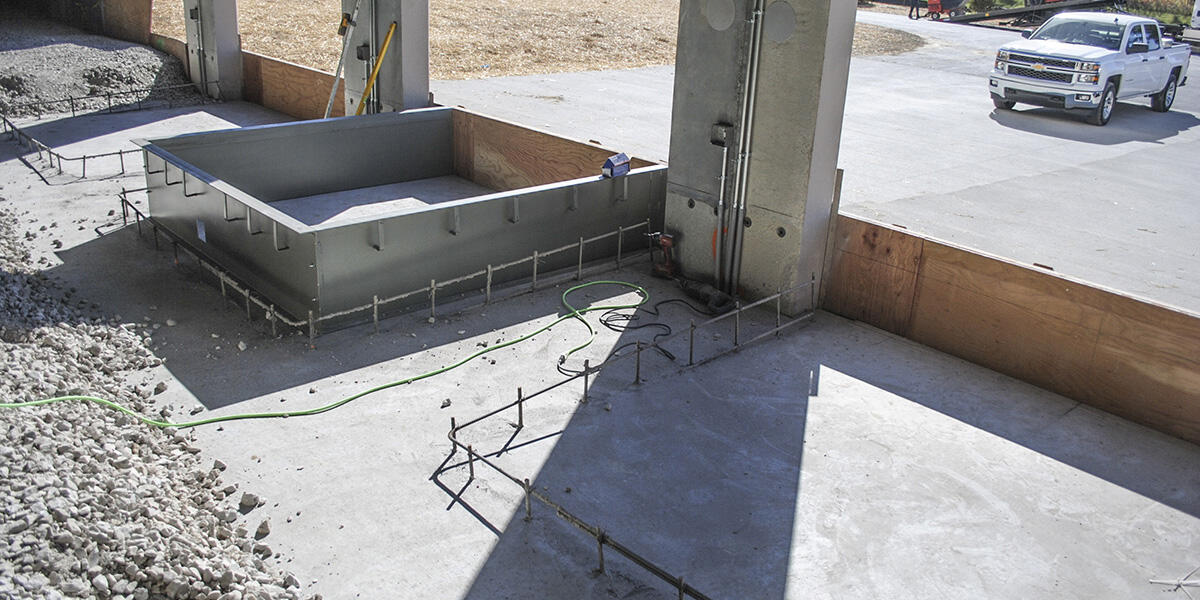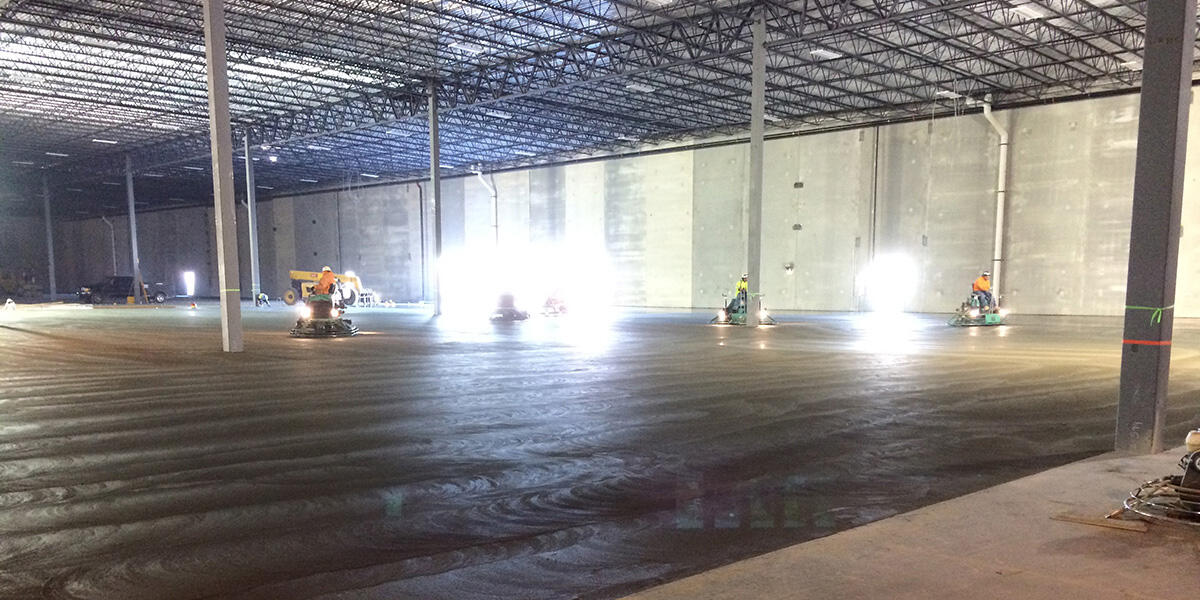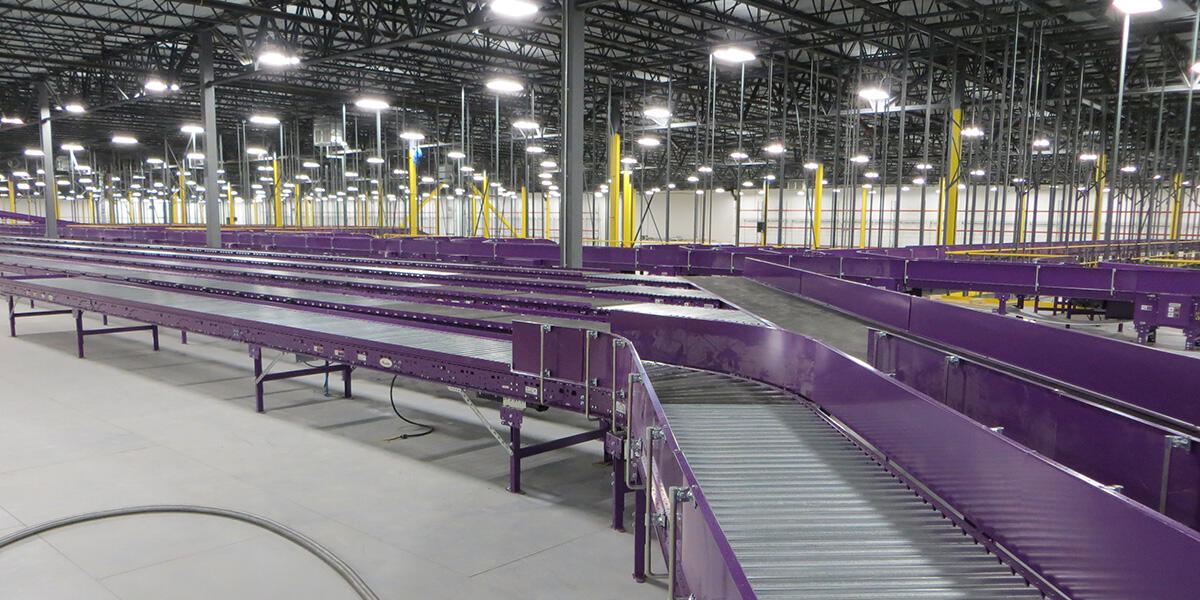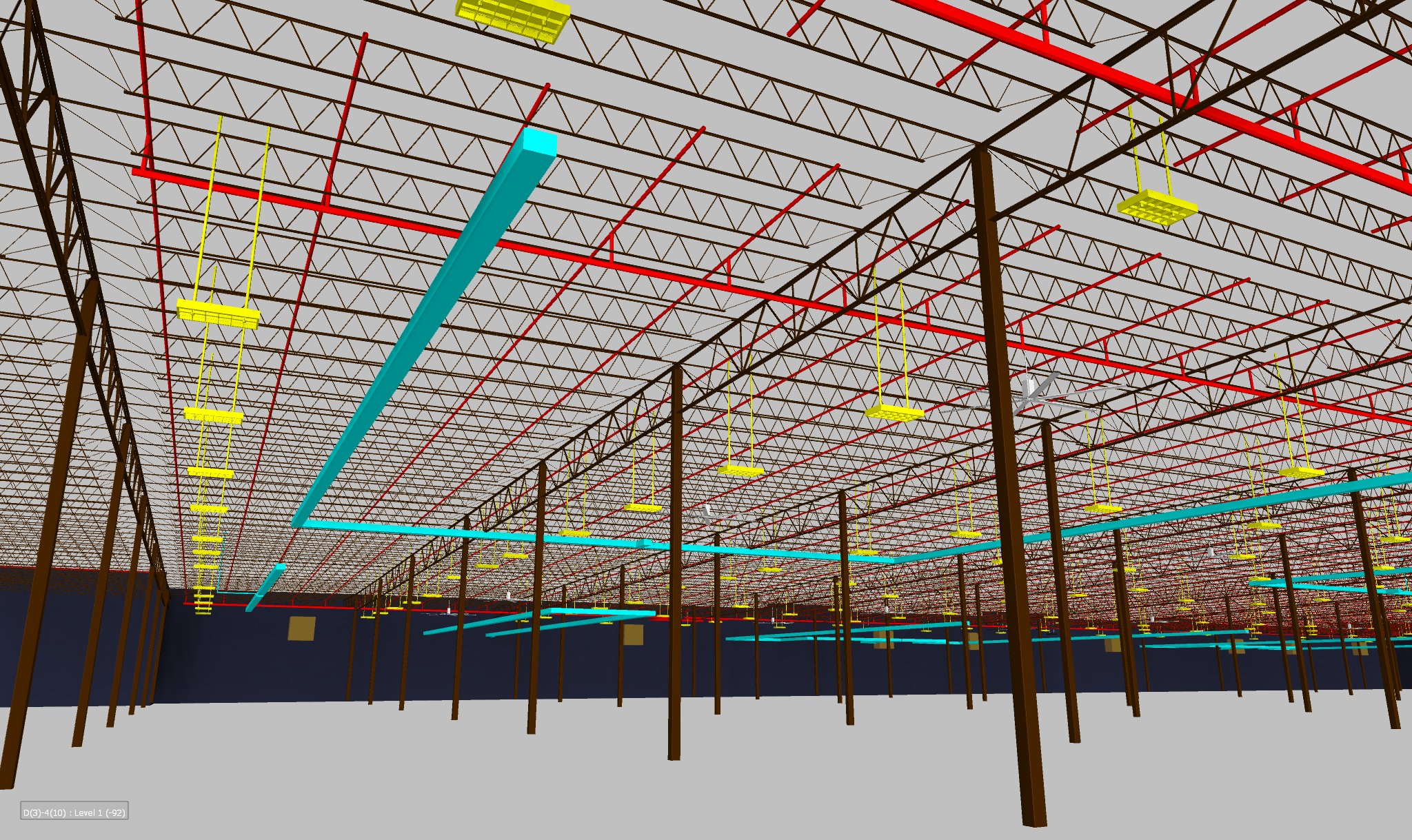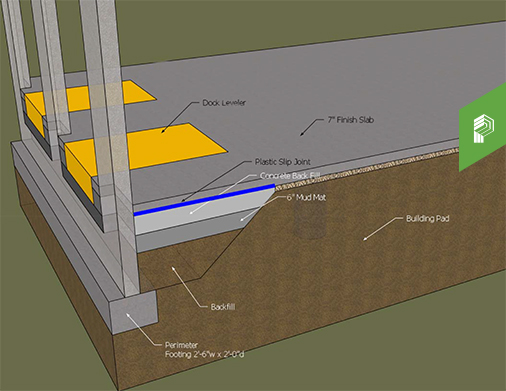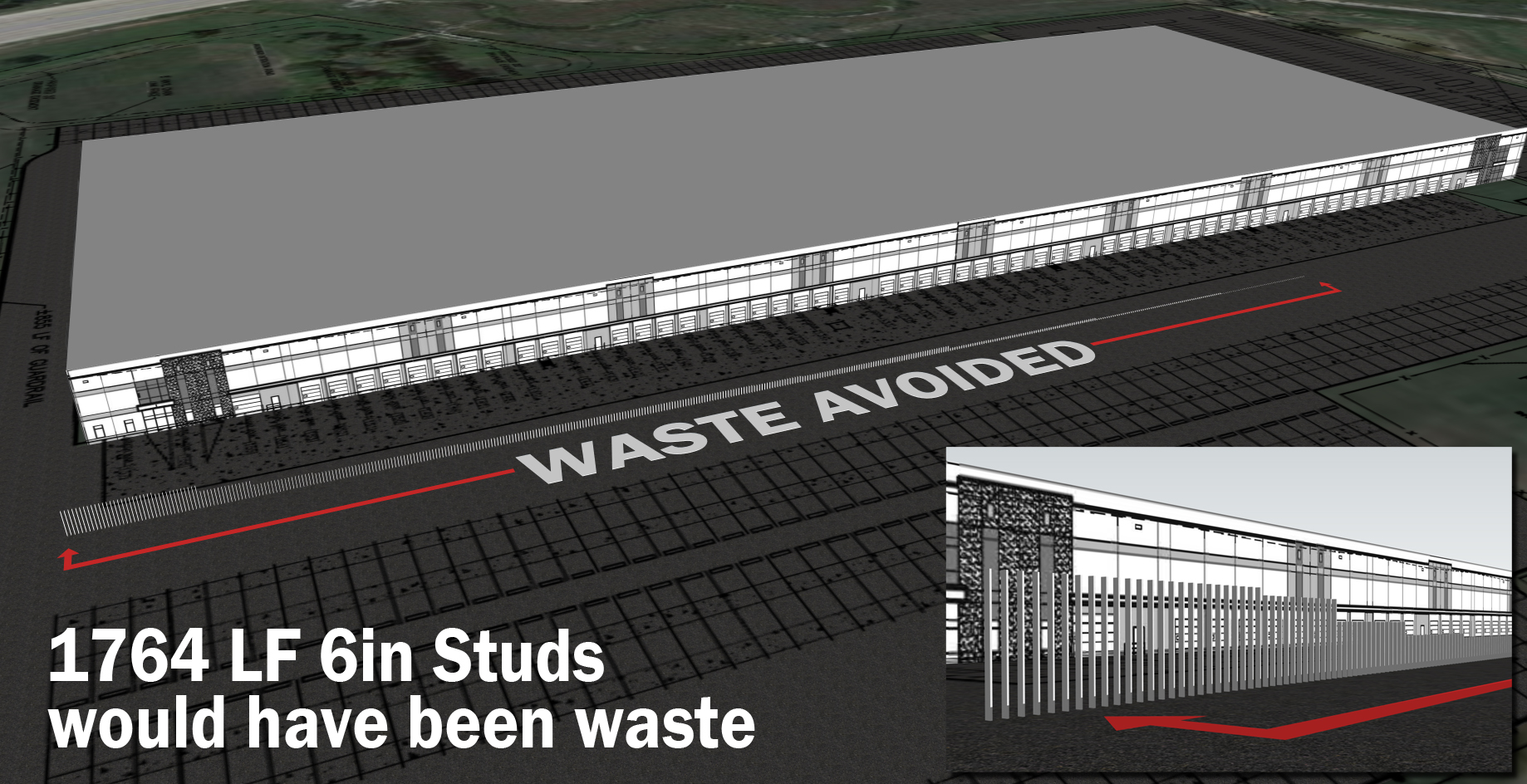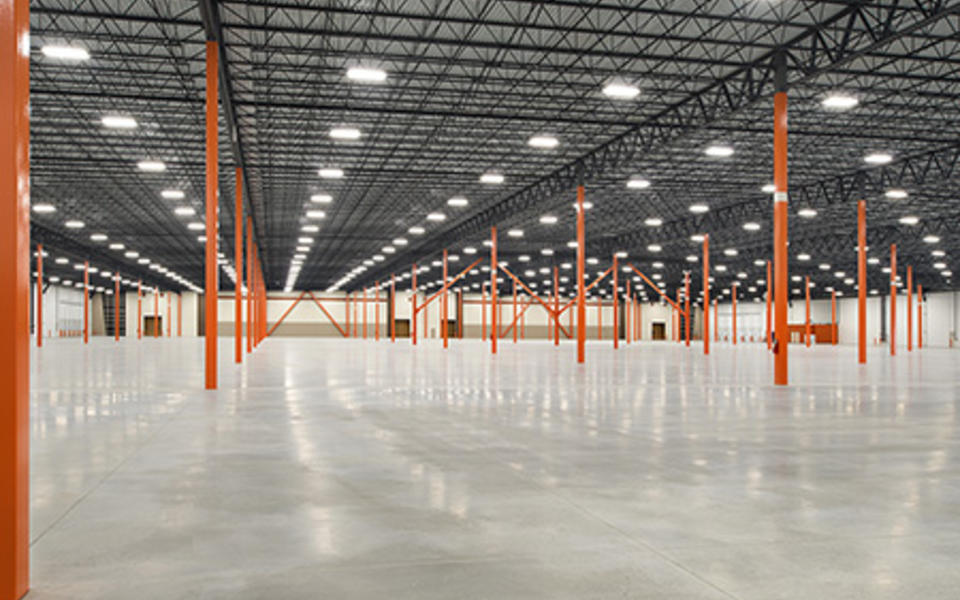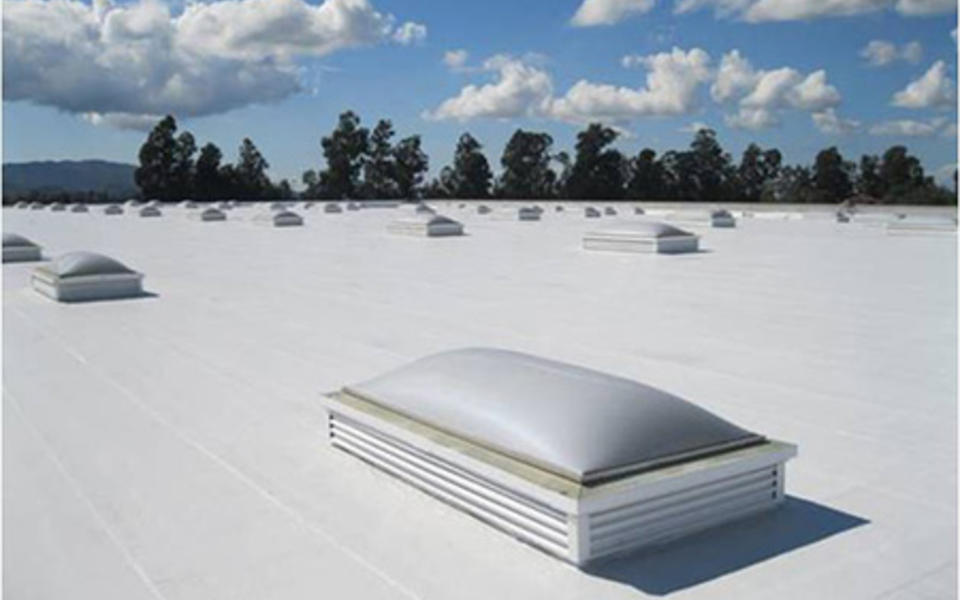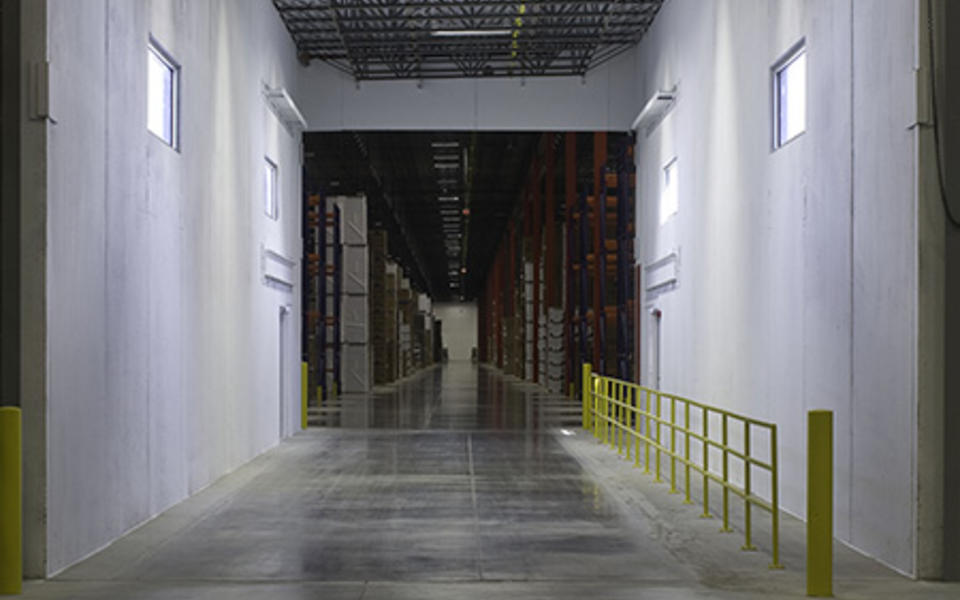Industrial and manufacturing, Emerging technology, Virtual construction & technology, Quality
Pepper has seen a significant increase in warehouse and distribution activity in the Midwest. Developers are driven by return on investment, balancing costs that keep lease rates low with features that attract the best tenants. Several new trends are emerging to improve efficiencies, slab performance and accelerate construction.
One significant market trend is e-commerce, where retail and industrial meet, with some retailers like Amazon even offering same-day delivery. These facilities require more square footage, docks and trailer storage, as well as elevated clear heights and additional parking. They also have a more sophisticated conveyor or mezzanine system that requires a higher level of coordination. At Pepper, we use building information modeling (BIM) to assist with the coordination process.
For example, on a 305,000-square-foot distribution facility currently under construction in Olathe, Kansas, Pepper modeled the location of the lighting system, tube heaters and fans, in addition to clearance for combustibles. During coordination the team identified conflicts between the lighting system and sprinkler heads and heaters, which resulted in a complete re-layout of the lighting system. The team also modified the layout of the heaters on the south end of the building to eliminate conflicts with the sprinkler system.
While not all buildings are constructed for e-commerce, distributors are asking for equivalent standards to compete. Pepper spends considerable time investigating and evaluating new materials and methods for achieving savings without sacrificing quality. On a quarterly basis our industrial team researches ideas that we can bring to our clients to provide value-driven options that save time and money.
We understand that warehouse and distribution facilities are designed around operations, and they are relatively straight-forward and use cost-effective materials, so we have focused our research on the three areas of the facility that are impacting the storage and distribution business:
01. Slab
While floor flatness and levelness are important features for the operation of the building, we're no longer living by the strict tolerances we once had to consider because of improved performance of equipment and systems. Laser screeds are now equipped with 3D and GPS technology and advanced material handling equipment, like turret trucks, allow for imperfections in the floor.
Still, the floor is one of the most important aesthetic features distributors consider. There are many factors that go into planning for the slab. At Pepper, we hold an extensive pre-installation meeting for our slab pours to cover all aspects, from the spacing and depth of the saw joints, to the timing of putting the saw joints in, to the timing of trucks delivering concrete, all of which impact how well the floor will look and perform. Everyone in the process is asked to participate and a thorough review of all steps, sequencing and responsibilities are communicated because if one step is missed, it makes a big difference in the quality and performance of the floor.
A construction partner who understands what is important will analyze different methods and materials for ensuring floor flatness, looking at both together to know which product to recommend based on the function of the facility.
For example, when Ductilcrete was still new to the Midwest, Pepper invited the manufacturer, engineers and contractors to an educational session to learn about the material as well as the best method of installation. We held a similar session with The Face Companies' concrete consultant, which developed the FF and FL measuring system standards, to learn the best practices for achieving floor flatness and to minimize slab curling. And even outside the facility, different materials, like roller compacted concrete (RCC) can be used to extend the life beyond that of asphalt.
Finally, as is often the case with large building pads, the Midwest climate can come into play. This past spring many of our projects experienced rain delays that prevented us from making planned progress. The standard solution these days is to lime stabilize the soil; however, that comes at a premium. The other option that Pepper has used in certain situations is to incorporate under-slab drainage systems into the design, which allows the water to drain away from the site during construction.
The most important part of the slab is around the docks, which will crack if not done properly. The right contractor will give special attention to this area. Through our research, we have developed a technique and pour sequence that eliminates cracking at the docks. We use this on all of our projects and incorporate it into our budget upfront because we believe the investment is beneficial to the life of the facility.
02. Building envelope
The second area that impacts performance is the building envelope, which includes the exterior wall and roof and how they react with the indoor air. At Pepper, we're analyzing different material trends for their efficiency in the Midwest because the climate affects their performance and thus ability to meet today's energy standards.
One trend that we have seen coming from the coasts is the incorporation of white TPO roofs for energy efficiency. These roofs are so effective in cooling the interior environment that, in the Midwest, they can cause condensation issues.
From our experience, we have learned how to enhance the environment inside the building to minimize condensation risks. One obvious answer is the use of a dehumidification or air-conditioning systems, but those solutions can get expensive. The most common way of heating these types of buildings is the use of 100 percent make-up air units. The drawback is that these types of units cycle on and off, not allowing the building components (slab, exterior walls and roof structure) to heat up with the temperature of the space to keep these components above the dew point, and therefore avoiding condensation build up. So, we've been recommending 80/20 units, or air rotation units, which allow for more air turnovers within the space and keep the interior components at more consistent temperatures to reduce the amount of temperature stratification. While these units are a slight premium, they save in operations, improve the quality of the building and make it a more marketable space.
Though it seems minor, another investment in which our clients have been interested is extended roof warranties. The standard warranty covers 10 years, but there are several 15 and 20-year options that are worth considering. They are a very cost effective insurance policy for those looking to own the building long-term.
Finally, as Pepper does work across the country, we have learned to talk about the walls in terms of the market. Is it a precast vs. tilt-wall market? Because different markets have different players and different kinds of construction that are acceptable. The answer has different implications on the schedule.
Tilt walls are cast on site, tilted in place and then insulation is attached on the inside. Precast is made in a factory, with insulation sandwiched between the interior and exterior concrete. Because it is cast on site, tilt wall is exposed to the elements so it can take longer to install. However, locally, there may be only a few precast manufacturers who can service an industrial warehouse and distribution center at an economical price, and due to the demand over the past 2-3 years, precast availability can be out by several months. Further, with increased demand comes higher prices. Since 2012, we have seen the cost of precast increase by 30 percent. This is an area that Pepper is constantly monitoring so we can provide current market knowledge to our clients.
03. Bay spacing and clear heights
The third important feature is the size and spacing of the facility. Particularly with e-commerce buildings, bay spacing and clear heights become an important part of the planning process.
The standard clear height has been 32 feet; however, the market is driving the standard height up to 36 feet and taller for e-commerce buildings. Particularly with speculative buildings, we encourage owners to consider raising the standard height from 32 feet for facilities that reach 500,000 square feet or more to make their building more marketable.
Bay spacing is determined by trends in the industry, and it is closely tied to the size and spacing of the racking aisles and the flue space. We coordinate all of this so that the columns land in the flue space. Many factors impact the aisle width, like the type of equipment the tenant is using and pallet positions or locations, and every tenant is different. The best way to design a facility like this is from the inside, out, so it works for operations.And that's why it's also important to work with a design-build team that understands what the market is currently demanding in terms of spacing trends so we can help owners make informed decisions, particularly for spec construction.
While 50-foot bay spacing has been typical, we are even seeing up to 60-foot spacing to provide more flexible spacing for tenants' racking layout needs. Your construction partner should be able to walk you through different scenarios to help you make a decision that works for both, so your building can work for a variety of functions and tenants.
We know that quality can be a premium, but it can also bring a competitive advantage. Through the use of technology, we have found ways to be more exact in our measurements and coordination, which has avoided conflicts and expensive re-work in the field and avoided unnecessary waste or time spent waiting on additional materials to arrive.
Example: Pepper used BIM on a 327,000-square-foot distribution warehouse in Indianapolis, Indiana, which allowed our self perform team to order material quantities cut to size and provide illustrations to the trades for installing the pieces per the model. Using the model to order prefabricated studs avoided approximately $2,500 worth of wasted material from cutting the studs to size, more than 15 trash carts and the cost of labor to remove and transport the waste.
While industrial projects are often very similar, we consider each client, location and project so we can add value. Before any construction begins, we take time to properly analyze the site because the site makes a big difference in the cost and schedule.
A preferred construction partner will do their due diligence and look for ways to align their efforts with the client’s goals. And by identifying opportunities and cost exposures early and planning ahead for future expansions, we can uncover opportunities our owners haven't considered. Particularly for our clients who will be operating their facilities over the long-term, natural and LED lighting options can also make a difference. At Pepper, we’re helping our clients break ground by looking out for what’s next and giving them a competitive edge today.

